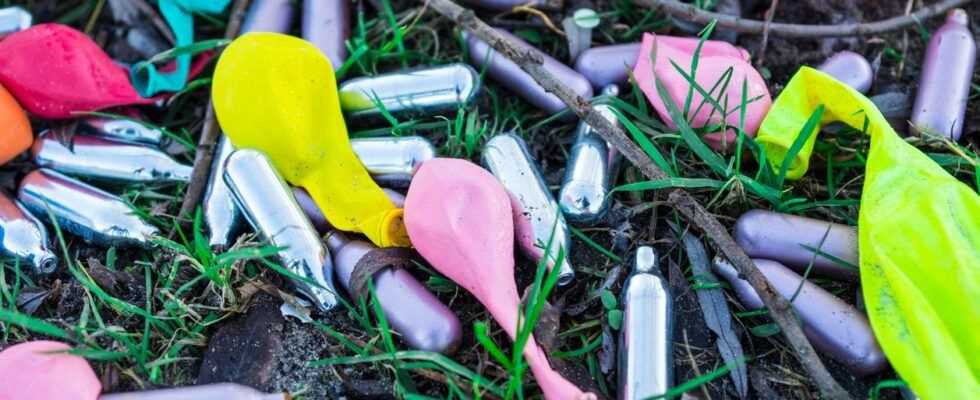Home
/ Mom / Child / Hilarious gas: a worrying increase in consumption among the youngest
Since 2018, the Ministry of Health has noted an increase in the consumption of nitrous oxide (laughing gas) among schoolchildren, high school students and students.
Do you recognize these little cartridges? You have certainly already seen them in cooking tutorials since at the start, their use is more reserved for whipped cream siphons. Unfortunately, like many chemicals, they may not be used for other purposes. In younger children, it is used by inhalation, through a balloon where it has previously been spilled. Why would you want to suck this gas you wonder? It turns out that after being inhaled, it causes a feeling of fullness, euphoria, comparable to a drunkenness that lasts only a few seconds. This impression can last up to 5 to 7 minutes, depending on the breathing time of the gas. Crazy laughter also follows, hence its nickname "laughing gas".
Among young people, this gas has always more or less circulated, but since 2018, it seems that we are witnessing an increase in its consumption, sometimes leading to “serious” cases, a dozen in total since the beginning of l 'year. Municipalities in many cities have reported finding more and more empty cartridges in streets, parks and public gardens.
This worrying increase has led the Interministerial Mission to Combat Drugs and Addictive Behaviors (Mildeca) to launch a prevention campaign on social networks for the past ten days. In cities, municipal orders are increasing to prohibit the sale of nitrous oxide to minors.
A dangerous practice
Besides inhaling a gas that is absolutely not intended for this purpose, the dramatic health consequences are very real. Among them, health authorities cite cold burns on expulsion of gas, unconsciousness, asphyxiation due to lack of oxygen, memory loss, erectile dysfunction, lower blood pressure arterial, heart rhythm disturbances… Worse still, it seems that repeated consumption of nitrous oxide could lead to neurological disorders or even respiratory distress. Consumed on a regular basis, this gas can reach the spinal cord, cause a deficiency in vitamin B12, anemia, or mental disorders. It can also lead to death, as was the case with a 19-year-old student on May 5, 2018, who suffered a cardiac arrest.
